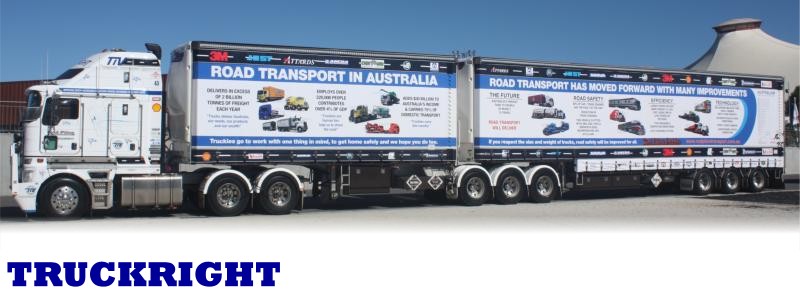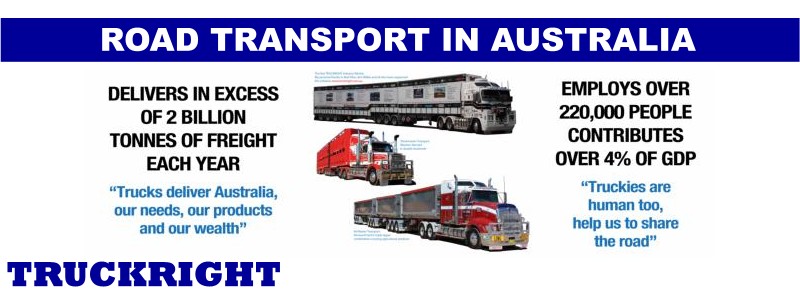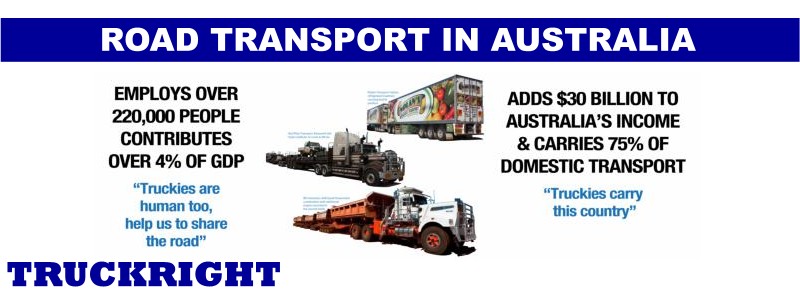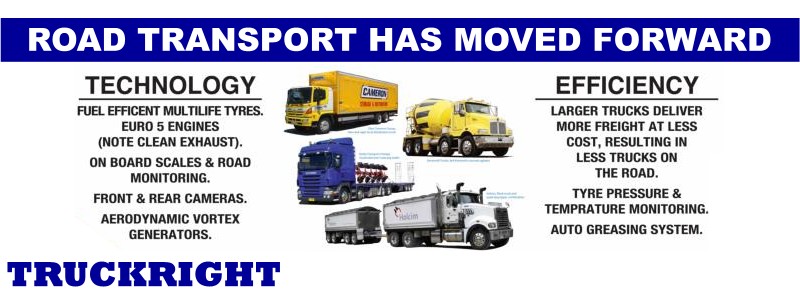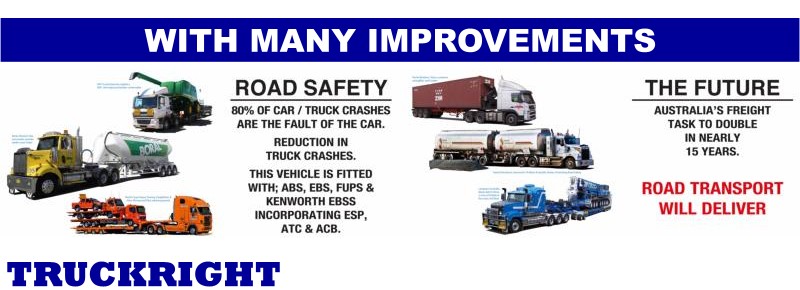It is generally recognised that there are insufficient truck rest areas and insufficient money available to fix the problem immediately. There are many informal spots used by truck drivers where there is either not enough capacity in current truck bays, or where the spacing, location and or lack of facilities, particularly shade in the daytime, sees trucks pulling up on wide road shoulders etc for legal breaks, load checking and of course sleep.
A driver who travels a road each night or regularly, most often knows where these informal spots are and can locate and use them if needed at night to allow them to manage their fatigue. A driver who travels many roads or who is all ready fatigued may not know where these informal sites are and can end up being forced to drive on to a properly signed and recognised bay, which may be 10 minutes or an hour away, especially when many formal sites are not signed more than 2 kilometres in advance. This changing with signs showing the next 3 rest areas, but is no good to you if you need a site now.
Because such informal sites are not normally marked in any way and are too easily passed before they can be recognised as a safe place to stop, regular black skidmarks often attest to this problem, where a truck has had to brake savagely to attempt to access such a site, seen at the last second and where to go on is not the best or safest thing to do.
In 2012 following continuing representations to Vicroads and having the marking of informal truck bays included in their rest area strategy document, I was told that following the major bushfires, blue would not be a suitable colour and they suggested green. Since that time a trial has been conducted in Queensland by the Main Roads office at Warwick and green was deemed to be as effective and so towards having this as a national program, we have moved to green reflectors.
Marking of these informal sites with Blue Reflectors (which was the usual colour used for Truck Rest Area signage) on guide posts, was initially trialled on the Newell Highway starting in December 1999 from Parkes to Peak Hill and then expanded on to Gilgandra in April 2000. Sites which were all ready seen to be used, were checked and those suitable were chosen and marked by RTA staff with due regard to line of site for both safe entry and exit into traffic, of large trucks.
Subject to the spacing of current guideposts, the set up consists of fitting three now, green reflectors (with a reflector spacing between the normal red reflector and each of the green ones) to a guide post approximately 300 to 400 metres from the chosen site, two blue reflectors on the next or subsequent guidepost (minimum spacing is to be 100 metres) and a single blue reflector to the last guidepost immediately prior or adjacent to, the informal truck rest area. The three green reflectors together are easily seen from 300 to 400 metres away on low beam and well in excess of 500 metres on high beam, giving a minimum of 600 metres warning of the site. In using guideposts which are all ready in place, the only cost is the green reflectors and fitting of same.
I am still in contact with all other states and am ever hopeful of further expansion of this road safety initiative. Cars can, if needed often just pull up on a bit of dirt, but loaded b-doubles and road trains, need more room than this to park safely and there is no denying that fatigue can happen at any time and must be managed safely, both for the driver and for other road users. Awareness of the marking of these informal bays will not be aimed at the general public so as not to see these places used by cars. Using Green Reflectors for marking of informal bays is intended to be an interim measure until suitable and sufficient formal truck rest areas are funded and built throughout Australia.
If only one fatigue truck crash is prevented, the cost of installing and maintaining Green Reflector Marking of Informal Truck Rest Areas across Australia will be worthwhile and every subsequent fatigue crash prevention, will be a major road safety benefit with the possible saving of lives.
Blue Reflector Marking of Informal Truck Rest Areas was entered into the Queensland Road Safety Awards 2005 and won the Industry Category. The Blue Reflector Marking of Informal truck Rest Areas was also included in my written and oral submissions to the House of Representatives National Inquiry into Road Safety, Eyes on the Road Ahead, June 2004.
As per the recommendation below it was adopted and the inquiry suggested an immediate roll out of this road safety initiative.

The following are emails of support for the Blue Reflectors.
1. NTI sent this email in support and it was printed in Owner Driver Magazine.
Refer 'Look Out for Blue Reflectors' O/D February 8th 2002.
In liaison with Rod Hannifey, NTI's risk management unit - NTI
Resources has reviewed the potential safety outcomes relating to this
initiative. NTI strongly supports the push to extend the trial to major highways
and commends Hannifey for his commitment to driver safety.
This initiative will undoubtedly save lives.
Owen Driscoll NTI National Development Manager – Transport
2. Hi Rod,
Good to see that you are still promoting the blue reflector marking of truck pull up areas.
Both my drivers and myself have found this method very easy to identify and use on the road and I personally think that all states should implement this idea.
Keep up the good work and give you my full support with this program.
Regards, Steve Fieldus, Director Transforce Bulk Haulage P/L.
3. Hi Rod,
Alan is unavailable to respond personally to your request, but as Alan's wife I would like to respond on his behalf.
Your Blue Reflector Marking is an excellent program and has fulfilled a definite need in the transport industry. Alan has often commented to me about the service it provides and he himself has often relied on the 'blue markers' to find a rest area when the next town is just to far away. As our trucks work mainly between the Melbourne to Brisbane area's it is something our employee's have become familiar with and rely on, to see the program expanded to all major roads would be a large plus for the transport industry. I believe the further you can spread the program the more accidents that could be avoided. To come up with the idea and follow it through has shown your support for the transport industry and your concern for safety.
It is appreciated.
Yours Sincerely, Rachael Magill, A&R Magill Pty Ltd, Parkes NSW 2870
Both RMS NSW and TMR Queensland, now have formal guidelines for the marking of green reflector, informal truck bays.
I will continue to seek this initiative be rolled out until such times as there are suitable and sufficient truck rest areas across Australia. Fifteen years on I am still pushing to see this across Australia. As of this year, the Newell Highway is finally nearly done from end to end and some funding has been won to do six highways in the North West of NSW.
Thank you, Rod Hannifey.
Home Page | Australian Heavy Vehicle Configurations | Resources
TRUCKRIGHT - About Rod Hannifey | Aims | Events 2011 - 2015 | Events 2008 - 2010 | Riders 2011 - 2015 |
Riders 2008 - 2010 | Sponsors | Updates 2014 | Blog Posts
ROAD SAFETY - Caravan Safety Top Ten Tips | Caravan Survey | Eyes On The Road | Fog Lights Can Be An Issue | Green Reflector Marking of Informal Truck Bays | National Sharing the Road with Heavy Vehicles | Truckies 'On Road Code' |
Truckies Top Ten Tips
Contact Rod
